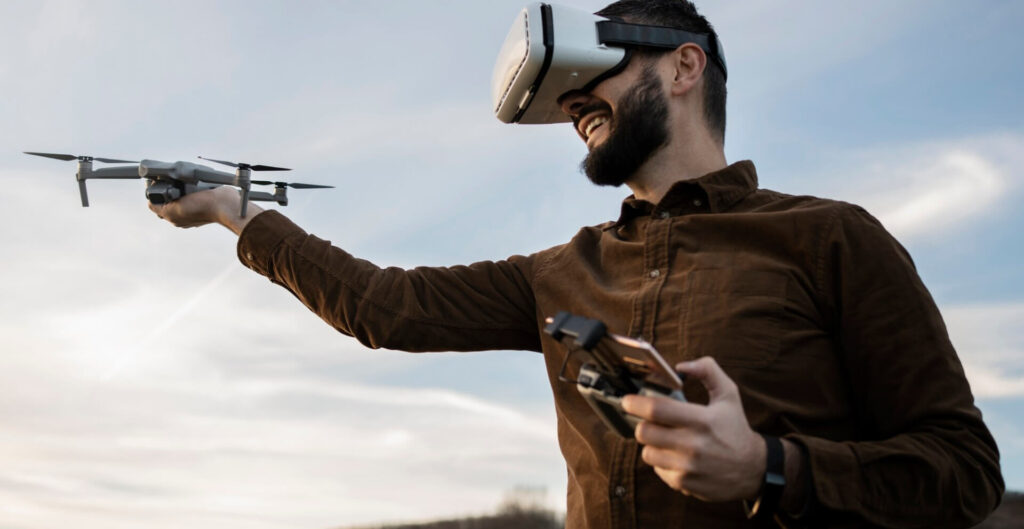
The logistics industry is undergoing a profound transformation, thanks to the rapid advancement of drone technology. Drones, or unmanned aerial vehicles (UAVs), are poised to revolutionize delivery systems, making them faster, more efficient, and environmentally friendly. Here, we delve into how drones are reshaping logistics and what the future holds for this innovative technology.
1. Speed and Efficiency
Rapid Deliveries: Drones can significantly reduce delivery times, especially for last-mile deliveries. They bypass road traffic and take direct routes, ensuring that packages reach their destinations quickly. This is particularly beneficial for time-sensitive deliveries such as medical supplies and perishable goods.
Extended Working Hours: Unlike human couriers, drones can operate around the clock without the need for breaks. This 24/7 capability allows for continuous delivery operations, improving service levels and customer satisfaction.
2. Cost Reduction
Lower Operational Costs: Drones reduce the need for human labor and can operate on electricity, which is cheaper than gasoline. This leads to substantial cost savings for logistics companies, allowing them to offer more competitive pricing.
Reduced Infrastructure Investment: Traditional delivery requires extensive infrastructure, such as warehouses and distribution centers. Drones can deliver directly from centralized hubs, minimizing the need for physical infrastructure and associated maintenance costs.
3. Environmental Benefits
Reduced Carbon Footprint: Electric drones produce zero emissions, contributing to a significant reduction in the logistics industry’s carbon footprint. This is a crucial step towards achieving sustainability goals and combating climate change.
Less Road Congestion: By taking to the skies, drones help alleviate road congestion, leading to fewer traffic jams and lower emissions from idling vehicles. This creates a more efficient and environmentally friendly urban landscape.
4. Accessibility and Reach
Remote Area Deliveries: Drones can access remote and hard-to-reach areas where traditional delivery methods struggle. This includes rural regions, islands, and disaster-stricken zones, ensuring that essential goods reach those in need promptly.
Urban Deliveries: In densely populated cities, drones can navigate through tight spaces and deliver to high-rise buildings, making urban logistics more efficient and less intrusive.
5. Technological Advancements
Autonomous Navigation: Advances in artificial intelligence and machine learning enable drones to navigate autonomously, avoiding obstacles and optimizing flight paths. This reduces the need for human intervention and increases operational efficiency.
Improved Payload Capacity: Modern drones are being developed with higher payload capacities, allowing them to carry a wide range of goods, from small packages to heavier items. This broadens their applicability across different sectors.
6. Regulatory Developments
Evolving Regulations: Governments and regulatory bodies are increasingly recognizing the potential of drone deliveries. Regulations are being adapted to ensure safety while promoting innovation. This includes setting guidelines for air traffic management, safety standards, and privacy concerns.
Testing and Trials: Various countries are conducting pilot programs and trials to test the feasibility and safety of drone deliveries. These initiatives are crucial for identifying challenges and refining regulations to support widespread adoption.
7. Future Prospects
Drone Ports and Hubs: The future may see the development of dedicated drone ports and hubs, designed to streamline drone operations. These facilities will serve as central points for drone dispatch, maintenance, and battery recharging.
Integration with Autonomous Vehicles: Drones could be integrated with autonomous ground vehicles for a seamless delivery network. This hybrid approach would combine the strengths of both aerial and ground delivery systems, optimizing logistics workflows.
Enhanced Customer Experience: As drone technology evolves, customers can expect more personalized delivery options. Real-time tracking, precise delivery windows, and the ability to deliver directly to a person’s location (e.g., a moving car) are just a few possibilities.
Conclusion
Drones are set to redefine the logistics landscape, offering unprecedented speed, efficiency, and environmental benefits. As technology continues to advance and regulatory frameworks evolve, the integration of drones into mainstream logistics will become increasingly viable. The future of delivery promises to be faster, greener, and more adaptable, thanks to the innovative potential of drone technology.


